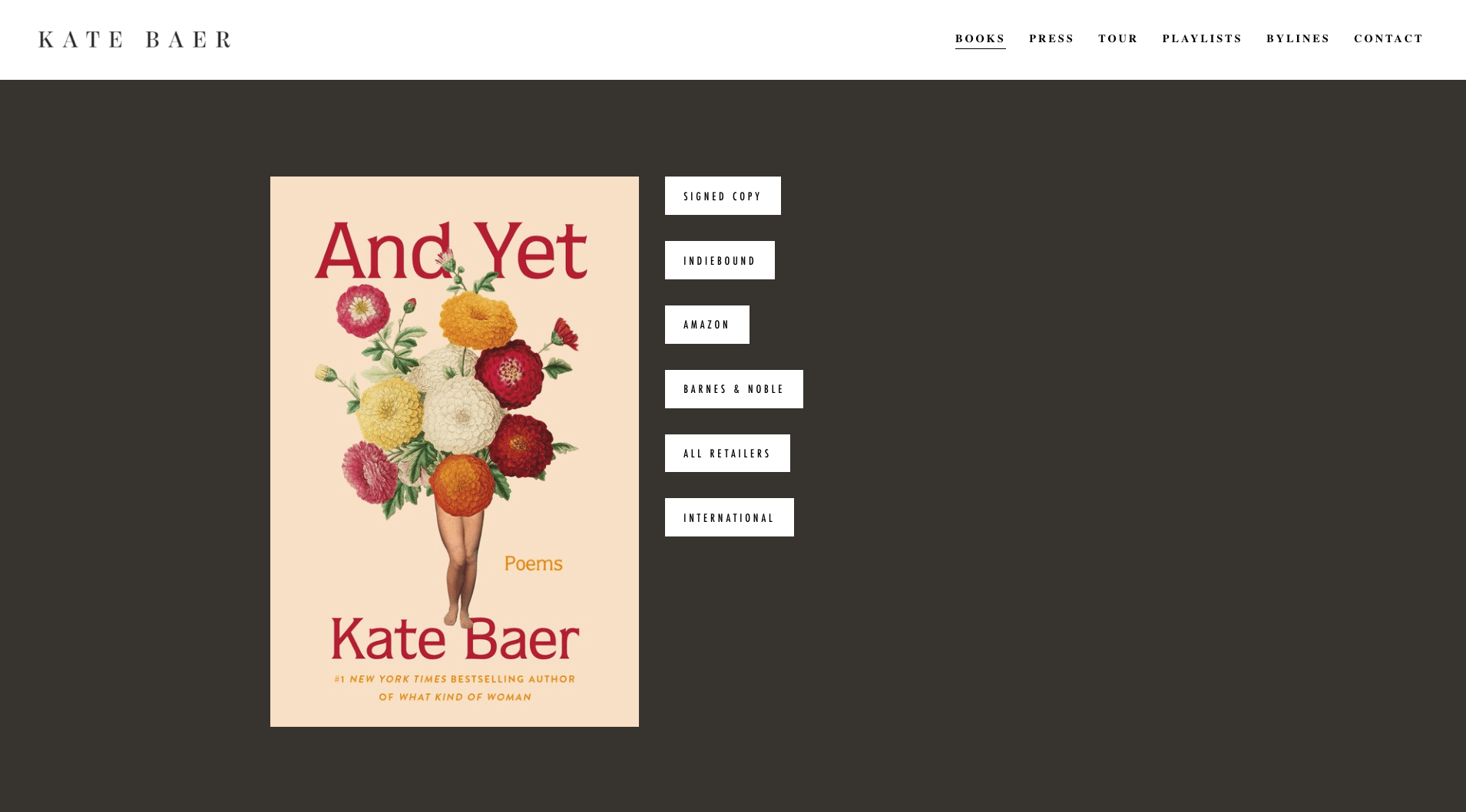Direct sales seem to be a growing way for authors to generate income, and while it’s not easy, the incentives are clear. By selling their work direct to readers, authors set themselves up to avoid paying royalty fees and capture more data about their readers.
Of course convincing readers to visit your site over retailers like Amazon is a massive challenge, and so is setting up the technology to actually sell and deliver your books. In this post we’ll give you a primer on what direct selling is, some of the pros and cons of this option, and how to set up your own system to sell books directly to readers.
What is direct selling?
Selling books directly to readers from your author website is known as direct selling or direct book sales. It’s a way for the writer to have more control over the selling and shipping process while pocketing more of the profits.
But direct selling isn’t for everyone. While you may have more control over sales and distribution, you lose the convenience and reach of third-party sellers, which can be challenging for new writers.
We’ll explore what direct selling is, what kind of authors benefit from this model, and how to drive sales of your great new book!
Should you try direct selling?
Direct selling requires more of an effort on the part of the author, but because you’re not giving retailers a cut, you ultimately get to pocket more money from sales.
When you sell to readers directly from your website, you’re in charge of:
- Advertising and promotion
- Inventory management, if you sell print books
- Processing transactions
- Preparing orders and shipping them in a timely manner, again, if you sell print books
- If you sell ebooks, you’ll likely need a service to host that book, so you’ll still have to manage the relationship with that
For first-time authors and those early in their publishing careers, direct-selling can be more of a challenge. If your book is available only on your site, you have to count on new readers landing there, which means you have to do all of the marketing and promotion to build a readership and move copies.
Direct selling is easier for authors who already have a readership and especially easy for authors who regularly engage with their readers through email newsletters, social media, and events.
Advantages of direct selling your book
- Maintain creative control over the promotion process
- Connect with readers and personalize orders with autographs, personal messages, and promotional gear
- Get paid faster and keep the profits that would normally go to the third-party retailer
- If you’re marketing- and tech-savvy, you can A/B test selling strategies, blurbs, loglines, and summaries
- Similarly, tech-savvy authors will be able to collect and analyze very basic data about their readers (the country where they’re located, for example, but be careful to respect readers’ privacy) that can be used to market future titles
- You can collect readers’ email addresses which you can use to build your email list and sell future books
The downsides to direct selling your book
- Third-party sites help readers discover new authors using algorithms, so first-time authors may struggle to make sales and create a readership if the book is available only on the author website
- The author is in charge of all the promotion
- The author is in charge of managing inventory and shipping orders
- The author is in charge of collecting all the correct tax-related information
- You won’t qualify for sales rankings like Amazon bestsellers lists
Alternatives to direct selling your books
If you don’t sell to readers directly from your site, you’ll need to partner with a brick-and-mortar bookstore, a third-party online retailer, a site like BookBaby, or all of the above.
But note also that you aren’t limited to either direct sales or third-party sellers—you can move your merch through both channels. But if you choose to sell this way, make a plan ahead of time to get organized on financial and tax matters and to streamline the process so sales don’t fall through the cracks. You should also check with third-party sellers to ensure they don’t want exclusive rights to sell.
New and established authors might try a combination:
- New authors might sell their first titles with a retailer and sell supplementary or bonus materials, like short stories, “deleted” chapters, etc., direct to readers on their own site.
- Established authors might sell their new books direct from their site and move older titles to sites like Bookbaby or to bookstores to maximize their reach.
How to sell books to readers directly from your website
Choose an e-com partner
If you’re going to sell your books, you have to give readers a safe and secure way to pay. Website builders like Squarespace, Wix, and Shopify have easy-to-use e-commerce tools and widgets you can use to capture orders and process payment.
Stock your book or choose a location to host your ebook
If you’re selling physical books, you’ll have to stock the books and then pack and ship them yourself. You can always use a print-on-demand service to avoid buying too much inventory, though that method can slow your shipping process.
If your book is an ebook, you’ll need a place to “host” the content. Sites like PayHip and Selz.
“Advertise” the book on your home page
Make it clear to everyone who visits your author website that you have a new book and that they can buy it right there.
For example, poet Kate Baer promotes her new collection above the fold on the homepage of her site:

Build an email list
In order to sell books through your website, we highly recommend building a solid email list of interested readers and regularly engaging them with new information, exclusive content, and event announcements.
When you’re ready to release a new book, you have an engaged and eager audience you can promote to.
Incentivize with discounts, promotions, and exclusive content
Give your readers incentives to buy directly from your website by offering price discounts or promo periods (the first 20 orders receive 20% off, for example).
You can also engage readers with exclusive content. For example, readers who buy print copies of your new book might get a free ebook of an older title, or readers who buy your new ebook get access to your Substack newsletter or Patreon content free for six months.
Buy ads
You can always buy targeted digital or print ads to move books. Send buyers directly to a page where they can put the book in their cart and check out.
Promote your book on social media
Don’t forget to use your social media channels to promote your new book. Link to your e-commerce page on the posts and in your profile and drive readers to buy.
You can also try targeted social media ads to draw in interested buyers.
Promote your book among book clubs and reading groups
Contact local book clubs and reading groups and offer to give a free reading, book signing, or meet-the-author session at their next meeting.
Make it super easy for participants to buy your new book directly from you:
- If you meet the group in person, bring a few copies of your book and your Venmo or Paypal account information so you’re ready to receive payment.
- Pass out promotional collateral with a QR code that takes readers straight to your direct sales page.
Have you tried direct selling? How has it worked for you? Share your thoughts and tips in the comments below.

Excellent note on direct selling of physical and ebooks.
This book is so great! I love it.
This is a good roundup of what’s involved with direct sales. Thanks! I appreciate your point that it’s not all or nothing–you can have direct sales and sales through platforms like Amazon. One disadvantage of direct sales is collecting taxes, esp. those beyond the U.S. Make sure you sign up with an e-com partner that does that for you. It’s an incredible hassle. FYI, PayPal does NOT collect taxes.
Create urgency by offering discounts for a limited time (e.g., “First 20 orders receive 20% off”). This encourages immediate purchases @quordle
What specific types of exclusive content would motivate readers to buy (e.g., free ebooks, access to sprunki newsletters)?